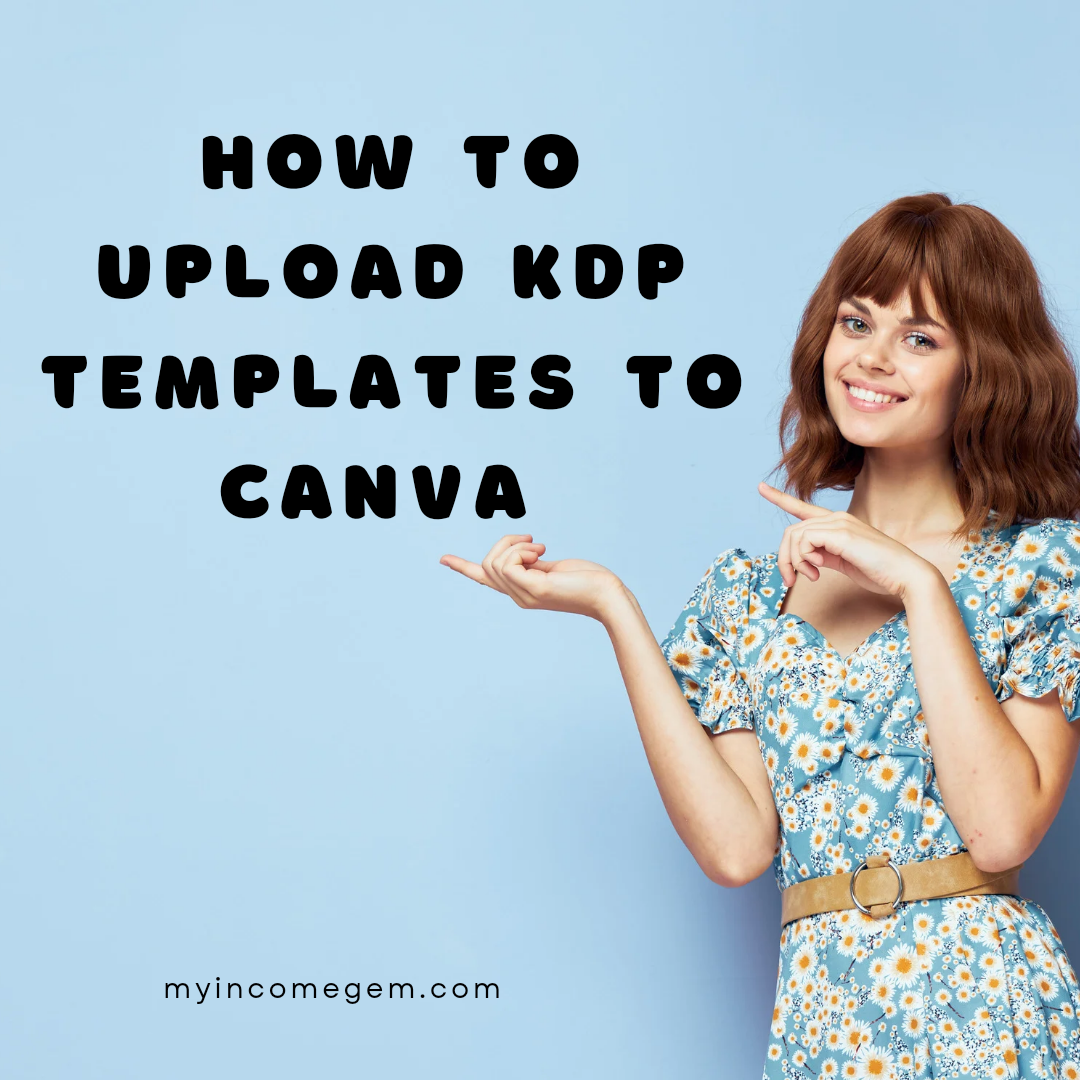When it comes to creating professional and visually appealing content for self-publishing, many authors and entrepreneurs turn to Canva as their go-to design tool. Canva offers a wide array of templates, images, and customizable design elements, making it an ideal choice for those who may not have extensive graphic design experience but still want to produce high-quality visuals. For authors using Amazon KDP (Kindle Direct Publishing) to self-publish their books, Canva can be especially useful for creating stunning book covers, interior designs, and promotional graphics. However, as convenient as Canva is, it also raises important questions about the legal use of its content. A frequent concern among authors and self-publishers is whether the images and elements from Canva can be used for commercial purposes, like publishing on Amazon KDP.
Amazon KDP is one of the most popular platforms for self-published authors, allowing them to sell their books in both digital and physical formats. However, like any major platform, Amazon KDP has specific rules and guidelines when it comes to content ownership, licensing, and copyright. This is where Canva’s vast library of stock images and design elements comes into question. Canva provides users with access to free and paid resources, many of which are created by third-party artists and designers. The terms and conditions surrounding the use of these elements, particularly in a commercial context, can be complex. Before incorporating Canva images into your KDP book covers or interior designs, it’s essential to understand how Canva’s licensing agreements align with Amazon’s requirements for commercial use and intellectual property rights.
Many authors might assume that if they can access an image on Canva, they are free to use it in any way they choose. However, that’s not always the case. Canva has different licensing options, such as free, paid, and extended licenses, each with its own limitations and permissions regarding commercial use. If you plan to use Canva images for something that will be sold or distributed, such as a book on Amazon KDP, it’s critical to know whether you have the right license to do so. Violating these terms could result in Amazon removing your book from its platform or even lead to legal repercussions from content creators who own the rights to the images you used.
Before jumping into designing your book cover or using Canva for any visual elements in your Amazon KDP project, it’s important to thoroughly understand the licensing rules, restrictions, and guidelines that come with using Canva’s resources. Ensuring that you have the proper permissions to use Canva images commercially can save you from potential complications, like copyright infringement or having your work flagged by Amazon. So, while Canva can be a powerful tool for creating stunning designs, the question remains: can you legally use Canva images for your Amazon KDP projects? Let’s explore the nuances and key considerations you need to be aware of to ensure you’re staying within the guidelines of both Canva and Amazon KDP.
Can I use Canva images for Amazon KDP?
Yes, you can use Canva images for Amazon KDP, but it’s important to fully understand the legal and licensing requirements to ensure that you’re complying with both Canva’s and Amazon KDP’s rules. This answer will break down the specifics of how you can use Canva images for your self-published books, what licenses are required, and what you need to be aware of to avoid potential copyright issues. Let’s explore this in detail to ensure you’re on the right track when using Canva for your Amazon KDP projects.
Canva’s Licensing: What You Need to Know
Canva offers two primary types of content: free content and paid (premium) content. Both types of content are governed by specific licensing agreements that dictate how these images and design elements can be used, particularly in commercial contexts like Amazon KDP.
Free Content
Free content on Canva includes a wide selection of images, illustrations, icons, and design elements that you can incorporate into your book covers, interior pages, or promotional materials. This free content is covered by Canva’s Free Media License Agreement, which allows for both personal and commercial use under certain conditions.
In the context of Amazon KDP, using free content from Canva is generally allowed for commercial use, meaning you can use these images and elements in your book cover designs or other materials that will be sold on Amazon. However, there are a few limitations that you must keep in mind:
- No Redistribution: You cannot simply take a free image or design element from Canva and redistribute it as-is. For example, you can’t use a Canva image as the sole or primary feature on a product that you plan to sell. It must be part of a larger, original design, such as a book cover that you’ve customized with your own elements like text, additional images, and formatting.
- No Standalone Use: Canva’s free images must be incorporated into a larger project. This means that you can’t use Canva’s stock images on their own without significant modification or context. For example, if you use a Canva photo as a background for a book cover, you need to add additional design elements, text, or overlays that transform it into something unique. Simply placing a Canva image onto a cover without customization could violate their terms of use.
By following these guidelines, you can safely use free Canva content in your Amazon KDP projects while remaining within Canva’s legal boundaries.
Paid (Pro) Content and Premium Elements
Canva also offers a large collection of paid content through its Canva Pro subscription or via individual purchase. These premium resources are governed by two main types of licenses: One-Time Use License and Extended License.
- One-Time Use License: This license allows you to use the paid image or design element for one specific project, such as a book cover. You are allowed to use the image commercially (for example, on Amazon KDP), but only for that single project. If you want to use the image for another book or a different design, you’ll need to purchase the image again.
- Extended License: The Extended License is broader and allows for more flexible use of Canva’s premium content. This license is particularly helpful if you expect to sell a large number of books or want to use the image across multiple projects. The Extended License grants more freedom in terms of distribution, making it a better choice for authors who anticipate significant commercial success with their KDP books. For example, if your book sells thousands of copies, the Extended License ensures that you’re legally covered for such wide distribution.
Amazon KDP’s Guidelines and Requirements
Amazon KDP has strict guidelines when it comes to the content published on its platform, especially in terms of image rights and intellectual property. Amazon requires that authors and creators hold the necessary rights to all elements of their books, including covers, illustrations, and any other visual content. If you do not have the proper rights to the images used in your book or cover, Amazon can remove your book from the platform, and in some cases, the original copyright holder could take legal action against you.
When using Canva images for your KDP project, you need to ensure that:
- You Hold the Appropriate License: Whether you’re using free or premium content from Canva, you need to ensure that you have the correct license for commercial use. This means adhering to the terms of use set by Canva, which often includes making sure that the content is part of a larger creative work and not simply repurposed or resold on its own.
- Document Your Licenses: It’s a good idea to keep records of the licenses you’ve obtained for any Canva content used in your book. This documentation can be useful if Amazon ever questions the legality of the images used in your project. Canva provides receipts for purchased content, and this documentation will help demonstrate that you have the right to use the images for commercial purposes.
- Create Original Work: While using Canva elements can be helpful, always strive to add your own originality to the designs. This could be through combining multiple elements, adding your own text, modifying images, or creating a custom layout. This not only helps you avoid copyright issues but also makes your work stand out in a crowded marketplace.
Let’s say you’re designing a cover for your new mystery novel. You find a stunning background image on Canva that fits perfectly with the theme of your book. It’s a free image, so you decide to use it. To comply with Canva’s terms, you add a title, author name, and some additional design elements to the cover. By doing this, you’ve made the image part of a larger creative project, which fits within Canva’s licensing requirements for free content. Now, you can confidently upload your book to Amazon KDP, knowing that you’ve adhered to both Canva’s and Amazon’s guidelines.
Alternatively, let’s imagine you find a premium image that you love but are unsure whether your book will sell a large number of copies. You purchase the image under Canva’s One-Time Use License and use it for your cover design. If your book becomes a bestseller, and you expect to sell thousands of copies, you may want to consider upgrading to an Extended License to ensure that you’re fully protected for large-scale distribution.





